Jun 7, 2023
McDonald’s: Through the Golden Arches to Global Dominance
In marketing theory and analysis, we often stress that a brand is much more than just a logo. There are many factors involved when it comes to developing one that’s instantly recognizable (product offering, mission, tone, messaging and customer experience).
But, McDonald’s is a brand that’s inextricably linked to one particular brand element: its Golden arches logo. It’s a powerful and meaningful image, built up over decades that evokes familiarity and a sense of fun for many customers.
Let’s look at how McDonalds used marketing and innovation to become a leading brand in a competitive market. We’ll also look at some of the challenges faced and consider how the company continues to modernize and adapt to embrace the changing digital landscape including artificial intelligence.
The Origins of Empire
Brothers Richard and Maurice McDonald opened the first McDonald’s restaurant in San Bernardino, California in 1940. The restaurant’s early years’ success led the brothers to franchise their concept to further locations, and the Golden Arches logo was first introduced in 1953 in Phoenix, Arizona.
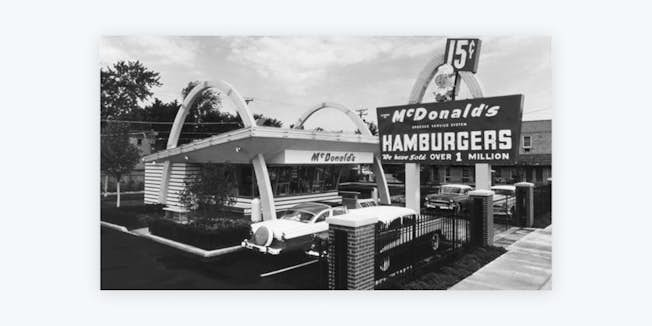
Ray Kroc, a Chicago native and distributor of a milkshake mixing machine, visited the McDonald brothers in 1954, which led to him becoming their franchise agent. Kroc ended up buying the rights to expand McDonald’s throughout the US.
How McDonald’s Built a Global Brand
Kroc’s ambition was to bring the company to a larger scale which he did largely through clever and creative marketing.
Kroc - subject of the 2017 film The Founder - established a partnership with Coca-Cola in 1955 to be the McDonald’s beverage supplier, a key alliance which has endured to this day and helped drive both companies to global expansion.
One standout piece of marketing to drive this growth was the “Look for the Golden Arches!” campaign, introduced in 1960. With the logo gaining increased prominence and traction, this message was genius in its simplicity.
Ronald McDonald was introduced in 1965, and the character began appearing in advertising to target their audience of children, adding that all-important element of fun: albeit one that hasn’t continued so well into this century, despite going through a 2012 makeover.
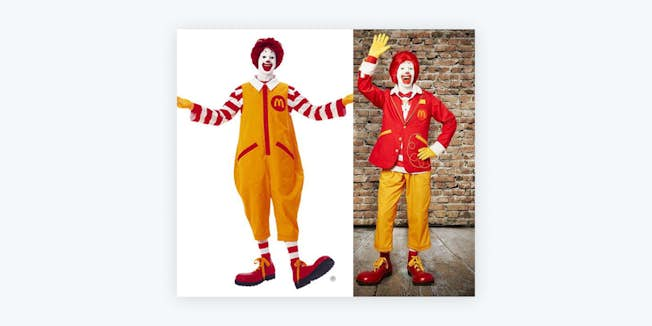
The company ramped up its advertising campaigns during these years, involving major spending on media – TV, radio and newspapers – with billboards and outdoor signage also playing a role in building brand awareness. The emergence of McDonald’s as a major brand coincided with the golden era in TV advertising, and the company leveraged the medium to its advantage.
Another arena for brand exposure is McDonald’s ongoing sponsorship of sporting events, such as the FIFA World Cup, although their 41-year partnership with the Olympic Games ended in 2017 due to heightened competition, the need to fund menu changes and tech improvements along with bad press for selling ‘junk food’.
McDonald’s Braves Stormy Waters
The company has often been the focus of controversy over the years. As its power and prominence have grown, its business practices, environmental record, working conditions, and health issues have come under the microscope.
In 1990, activists from a small group known as London Greenpeace distributed leaflets entitled ‘What’s wrong with McDonald’s?’, criticizing its environmental, health, and labor record. The company sued them for libel and the case turned out to be the longest running legal action of all time in the UK, referred to as the ‘McLibel’ case.
Morgan Spurlock’s 2004 documentary ‘Super Size Me’ claimed that McDonald’s food was contributing to the increase of obesity in society, and the company was failing to provide nutritional information to its customers. Just weeks after the film premiered, McDonald’s announced that it was eliminating the super-size option from its menu, and creating the adult Happy Meal. Aside from nutritional and health issues, McDonald’s has been a key target of the “Fight for $15” movement which started in the U.S in 2012 as a ground-level push from fast-food workers who started to walk off the job in an effort to raise the minimum wage. Their efforts have had some effect, with 22 million workers seeing raises, and the issue is expanding into other sectors, like the “gig economy” and ride-share workers.
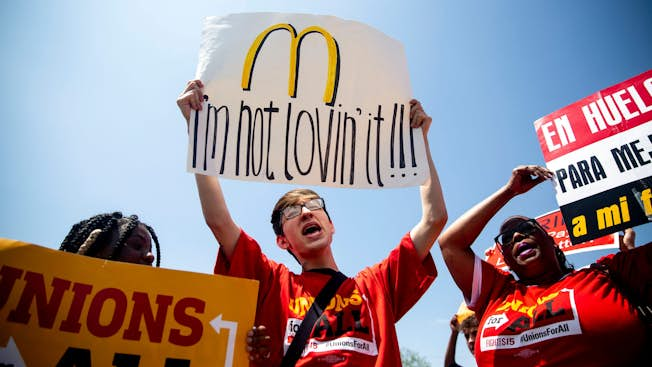
Modernization and Improving Image
Coming into the 21st Century, the company worked on addressing its deficiencies, improving its image and keeping up to speed with technologies. McDonald’s published its first ever Social Responsibility Report in 2002.
The tagline “I’m lovin’ it”, launched in 2003, has been a success, enduring in marketing campaigns ever since. Menu items continue to change according to health and environmental trends. The brand’s charity work is well known, like the ‘McHappy Day’ annual event and the Ronald McDonald House Charities. The corporate website highlights many areas of the company’s corporate and social responsibility, like climate action, beef sustainability, packaging, diversity, recycling and more.
Most recently—under the leadership of current CEO Chris Kempczinski—the brand rolled out its pivotal “Plan For Change”: an engaging and informative piece of content that outlines key objectives surrounding its revamped net zero emissions, sustainable food sourcing, efficiency, and inclusion and diversity initiatives.
Digital Transformation and Investment
“How do you transition from mass marketing to mass personalization? To do that, you’ve really got to unlock the data within that ecosystem in a way that’s useful to a customer.” McDonald’s CEO Steve Easterbrook
McDonald’s is in the midst of a digital transformation, adapting to new trends and leveraging technology to its advantage.
Pioneering AI decision technology
In 2019, McDonald’s purchased big data start-up Dynamic Yield Ltd, becoming one of the first global restaurant brands to integrate decision technology into its restaurants.
By leveraging its AI technology, McDonald’s enabled personalization in its drive thru menu and in-store kiosk displays by showing relevant items based on factors such as the weather, time of day or regional preferences. While Dynamic Yield was sold to Mastercard in 2022, McDonald’s will continue to scale and integrate the technology to further enhance customer experience.
However, some customers were not fans of this new software, Ren Adams (@resinsbiren) made a drive thru order only to have the passenger’s order who pulled up beside her also included! Other users have reported mishaps with the AI technology adding multiple orders or misinterpreting requests.
Customer Loyalty
Its ‘My Rewards’ app is so successful that in 2021 alone it earned 100% more downloads than its main loyalty competitor, Starbucks.
By developing a cohesive eco-system based on automated technologies, the brand plans to drive extra loyalty from its existing customers while creating a far more bespoke experience by tracking key insights from digital menus, food collection points, and mobile app interaction.
Speaking on the initiatives, McDonald’s President and CEO Chris Kempczinski, explained:
“Digital changes everything. So today, with 90% of the customers coming into my restaurant, I don’t know who they are. I don’t know their prior purchase. I don’t know what their buying pattern is. As I get better and better visibility into that customer, I can actually track and identify their preferences over time.”
The idea here is not only to drive an immense level of personalization, but to also improve operational efficiency in a way that improves output as well as speed of service.
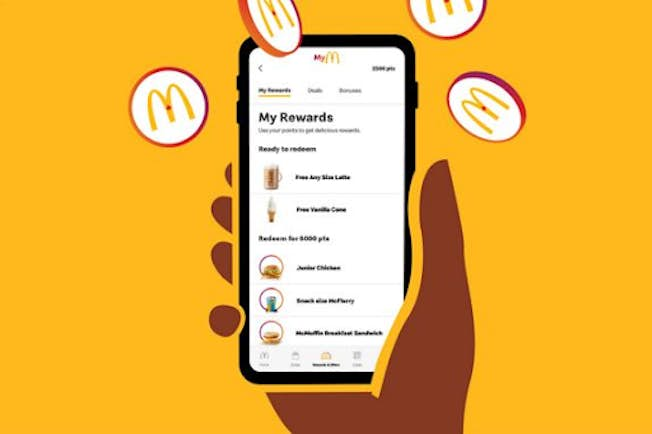
Driving centralization
McDonald’s has centralized its digital strategy for its social media accounts, simplifying their entire social operation, and allowing them to respond to customers in a personalized manner.
The launch of McDonald’s global brand hubs, a series of offices around the world, employs a ‘follow the sun’ model of engagement to track and interact with customers in real-time, on a constant basis. With thousands of brand mentions a day to deal with, this forms a key part of the digital strategy.
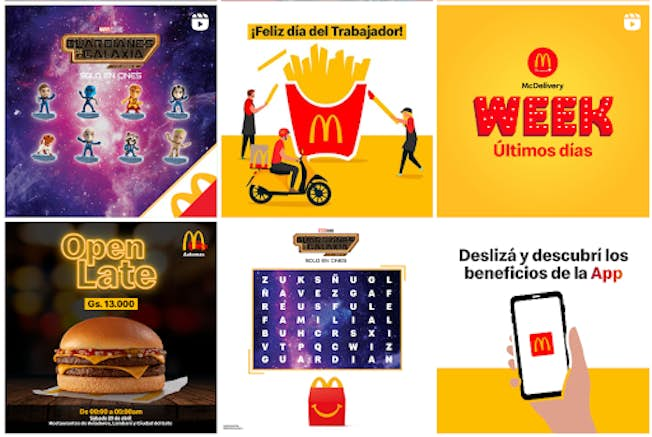
Inspiring communications and campaigns
Recent advertising campaigns have focused on advances in customer experience and digital innovations, highlighting how the brand is making life easier for customers.
The brand’s most recent forward-thinking campaigns include its artistic ‘McDelivery Pins’ print billboards, its star-studded influencer-led ‘Wanna Go To McDonald’s?’ initiative, and its quirky ‘Raise Your Arches’ campaign.
Spearheaded by British filmmaker, Edgar Wright, this stand-out video ad likens raised eyebrows to the famous Golden Arches.
Amplified by the hashtag #raiseyoureyebrows, the campaign has earned droves of engagement from various channels.
By partnering up with trending celebrities for its Famous Orders collaborations - including its Travis Scott Meal and J Balvin Meal - McDonald’s has tapped deep into the consciousness of Gen Zers while boosting in-app loyalty exponentially in recent years. In fact, the app installs skyrocketed by 23% during the initial week of its big BTS Meal promotion. No small feat in such a saturated industry.
However, McDonald’s has reprioritized its advertising budget in a bid to get more value and efficiency from its spending. A reduction in overall ad spend (a drop from $98.7 million in 2014 to $63.8 million in 2022) as well as more focused campaigns has proved to be a winning approach.
Tapping into community
The lion’s share of McDonalds’ traffic comes from organic search, direct engagement, and paid advertising—but what’s particularly interesting is the fact that community platform Reddit is one of the brand’s most engaged social channels.
It appears that the colossal impact of its various marketing initiatives, irresistible consumer deals, and commitment to making change has resulted in an ever-growing online community where fans share thoughts, opinions, and insider McD’s hacks.
This Subreddit provides the brand with access to no end of consumer insight for future marketing initiatives while offering an opportunity to connect with its audience on a personal level.
This video ad showcases McDonald’s ability to tap into memorable everyday moments to position the brand as a fast food purveyor for the people. With a wealth of content, from the funny and inspirational to the enlightening and educational, McDonald’s also earns healthy levels of engagement from its YouTube channel.
McDonald’s: Analysis and Final Thoughts
The digital revolution represents a major challenge for McDonald’s, a brave new world where it needs to adapt to remain strong and profitable. The company is showing that it’s up for that challenge, however, making some smart moves in order to stay ahead of the chasing pack.
“Long-term vision and commitment to staying the course goes a long way. Too many digital transformation projects are launched with the flawed expectation of jam tomorrow. McDonald’s is chasing the digital secret sauce over a far more pragmatic time frame,” according to digital commentator Stuart Lauchlan.
Millions of people continue to engage with, and buy from, the company daily. It’s an incredible success story, and it will be interesting to see how this powerful brand will continue to evolve.
Published 2019, updated 2023
Related
Upgrade to Power Membership to continue
your access to thousands of articles, toolkits, podcasts, lessons and much much more.
Become a Power Member- Login
- View Courses
- - - -
- Courses
- Resources
- - - -
- My Account
- Change Password
- Logout





